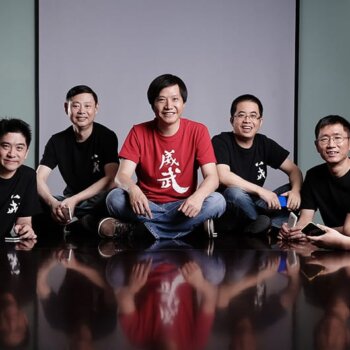As we all know, the internet has already transformed a number of industries from the ground up: from putting travel agents out of a job almost overnight, it went on to disrupt the media industry (music, newspapers, TV) and retail. Currently, banking, insurance, hospitality, automotive and logistics are witnessing unparalleled competition from new entrants in their markets. Tech-companies like Google, Facebook and Apple as well as agile startups challenge the incumbents and are not constrained by traditional industry boundaries:
● With less than 50 employees WhatsApp eliminated more than $30 billion in the telcos text message revenues in only 5 years
● Google, Facebook and Apple already own banking licenses, rethinking the financial industry from the ground up
● With over $60 billion in valuation just six years after launch, Uber is rethinking the entire concept of mobility and car ownership; Google it is focusing on autonomous vehicles to replace human drivers — with a groundbreaking impact on the automotive and insurance sector as a whole
● The insurance industry is threatened by Apple, Google and Co, building giant platforms for health data with health kits and tracking devices (not to mention Uber and their driver data)
● Hotels face competition from Airbnb while simultaneously coopting with the platform to fill their rooms at a significantly lower revenue share than charged by Booking.com and Expedia
This is only a snapshot of the fundamental changes each industry will be facing in the next 5 to 10 years. With 40% of major companies to be gone within this timeframe, mastering the transformation successfully becomes an adapt-or-die moment for most businesses.
But while those who fail to adapt face extinction, while Digital Rookies generate 24% less profits than the industry average, there is still some good news there. Digital experts reap profits 26% higher than industry average and it is not impossible for large companies in any industry to become Digital Experts. But how can they achieve it?
According to Forrester research, 74 percent of business executives say their company does indeed have a “digital strategy”. Although only 15 percent believe that their company has the skills and capabilities to execute on that strategy. For many years digital has been a supplement to the core business or was perceived as one of the many marketing channels. And for many companies it still is — according to the results from our Digital Maturity Assessment, in just 16% of major companies in Germany there is a C-level person responsible for digital business.
Technology shouldn’t be the driver of digital transformation
In most organizations “digital” is a subordinate area of either marketing or IT, as many companies organize their digital efforts mainly around technology or marketing.
When business leaders talk about going digital, many are uncertain about what that means beyond using the newest tools and having state of the art IT infrastructure. Just recently I was supporting a major German company with the kick-off of one of their digital initiatives. So I started asking about the goals of the project and the expectations for the kick-off phase. And the answer couldn’t be more surprising for me: “we want to specify the requirements”. And when I asked “but how do you want to write the requirements, if you don’t know how the customer is going to use it” I received an answer “that’s not really a challenge, the technology and algorithms are the difficult part here, when we’ve got this one right, then a designer can think about making it look nice”. And when I hear something like this, I just really want to shoot myself.
And it’s not because I think, that technology is not relevant. Au contraire! Companies do need assets like computers, servers, networks, and software, but it doesn’t have a lot to do with digital transformation.
Technology is becoming more and more of a commodity and not a differentiating factor: Google, Facebook, Amazon, IBM, Microsoft and others already provide their newest technological developments via APIs for everyone to use. Therefore if every company can utilize state of the art technology, without the necessity of actually building it, then maybe there are other factors critical for success in digital age?
Digital Strategy is not the answer
So the first step for a company to becoming a “Digital Expert” would be to recognize that digital is way more than apps, social media, Google AdWords and the newest IT-architecture. That it’s not about having a digital strategy but about having the whole business strategy ready for the digital age where the products, business operations and especially the customers are fundamentally digital. And that these digitally empowered customers should be the starting point of this strategy. That meeting their needs and expectations is the biggest challenge for the digital transformation.
Why customer experience is driving digital transformation
To understand how important it is just have a look at some of the most successful companies these days:
- Uber, the world’s largest taxi company, owns no cars. And it attracted millions of customers not because it is technologically innovative but because of the seamless, effortless customer experience;
- Same for Airbnb — it’s the world’s largest accommodation provider, but owns no real estate. They also provide value not through rocket science technology, but through the customer experience;
- Number26, might not be the world’s biggest bank yet, but they don’t own any core banking technology, they “only” provide the customer experience, that makes banking less boring;
- Withings scales can cost five times more than other scales because the additional app makes the customer experience smart health management, not just the unpleasant weight measurement.
And I’ve chosen these examples not because they have nicely looking interfaces. The expectations towards customer experience have changed. Technology is everywhere. Artificial Intelligence is making machines smarter and more useful. Increasing memory and processor capacityenable processing more and more data faster and faster. Technology is so cheap, that each and every product can be equipped with sensors and an internet connection: from toothbrushes to key chains, from shoes to shirts, from home thermostats to traffic lights. It’s pretty obvious in each case that technology is not the experience but merely the platform upon which the experience is delivered. In other words, these are not “technological” experiences. They are simply experiences that incorporate technology.
Customer expectations go beyond ease of use. Technology is expected to be a mobile, social and functional companion in our daily live. And we expect it not only to be “usable” but also to seamlessly integrate into our daily routines and to anticipate our actions. We expect it to provide more and more convenience and proactive experiences. To deliver Customer Experience Design, where the devices or software the customer interacts with, are actively “thinking along”. They know what I’m doing in this very moment, and predict what I’m going to do next. Without me having to take action.
Customer experience is widely ignored in big companies
But while 89% of companies plan to compete mainly on customer experience this year, only 24% of the managers responding to our Digital Maturity Assessment claimed, that they develop their digital products in a customer centric way, involving customers in multiple stages of the process. 32% don’t involve customers at all or just test with them shortly before launch (which in 99% of the cases means the same as not involving them at all).
And 34% only involve customers by conducting focus groups. Really, focus groups? They are basically the perfect way to keep inventing faster horses while someone else is inventing a car.
Or to keep investing in innovative new inks, innovative home printer solutions, and innovative photo paper while around the same time someone else is launching GoPro. 10 years later, Kodak (the guys with inks, photo paper and printers) was bankrupt and GoPro was preparing for a $3 billion IPO.
A group of people sitting around the table and talking will not provide you with innovative ideas for your product. Innovation comes from recognizing an unmet need of your customer and designing a new way to fill it. But most people don’t know what they are missing until they experience it and even if they manage to tell you their needs, you definitely shouldn’t rely on their ideas on how to fulfill them. I don’t want to dive too deeply into the particular topics of the focus groups, but let me just say, that they’re based on some risky assumptions: that people are perfectly rational, that they don’t lie, and that they don’t change their opinions under peer pressure…
Digital Experts involve their customers early in the process, not by asking them what they want, but by observing their habits, identifying their needs and letting them actually test the prototypes and products regularly. They invest in capturing and evaluating usage- and satisfaction-data and make decisions based on this data.
Hierarchical organization disables digital transformation
It might seam quite easy and straight forward but it’s not that easy to implement in a hierarchical organization.
Seth Godin hit the nail right on the head by describing this challenge in the following way:
“Great projects start out feeling like buildings. There are architects, materials, staff, rigid timelines, permits, engineers and a structure. But in fact, great projects are gardens. They are tended, they shift and they grow. They endure over time, gaining a personality and reflecting their environment.”
Most of the incumbent companies look very much like buildings to me, but can they somehow transform into gardens?
According to our Digital Maturity Assessment, almost 80% of the major companies rely on traditional corporate hierarchy. There are also several small, interdisciplinary teams in some of these companies, although they are working on topics beyond the core business and their decision-making competences are limited.
And the hierarchic organization might have worked well for the 20th century’s production- oriented industrial economy, but hardly goes hand in hand with the characteristics of digital business. Hierarchic organizations on their digital transformation journey struggle with two things in particular: velocity and risk-taking. Two things, that are highly interconnected and the main reason for most corporate disasters.
First — digital transformation requires quick adjustments and close cooperation within an interdisciplinary team. This implies that the people, who work on a certain project on a daily basis, need to be able to make quick decisions (beyond “where are we going to have lunch today”) and can’t be asked to wait for the management level approval regarding even minor adjustments. They need a real ownership of their projects. Including a decision on how, when and what to launch, without having to present it to a dozen steering committees.
Otherwise it becomes really difficult to achieve fast progress. Whilst management is often too busy with other things, teams that are actually trying to do their jobs find themselves exposed to long downtimes waiting for the green light.
Still, it could be worse. Sometimes there is no green light and proposed changes are being declined. The reason for this is usually quite simple: The decision makers are not engaged deeply enough in the daily business and can hardly understand the implications.
And the other reason leads us to the second biggest challenge. Hierarchical organizations don’t support the risk-taking that’s so fundamental to learning and ultimately to innovation. And this risk-aversity is quite obvious when you look at the numbers. In 15% of the major companies failure and risk-taking are not welcomed and can have a negative impact on the career. You might think, that’s pretty good, but only until you have a look at the second number. 70% of our respondents claim, that while the official policy encourages failure and risk-taking, they are not measured, and can have negative consequences for the risk-taker. While many companies claim to increase their efforts to create an environment that inspires innovation and creativity, they seem to be stucked to the risk-averse approach.
Yet speed and risk-taking are integral for innovation. Let me illustrate it with a little anecdote from the book “Art and Fear”:
The ceramics teacher announced on opening day that he was dividing the class into two groups: All those on the left side of the studio, would be graded solely on the quantity of work they produced; All those on the right solely on its quality. On the final day of class he would bring in his bathroom scales and weigh the work of the “quantity” group: fifty pounds of pots rated an “A”, forty pounds a “B”, and so on. Those being graded on “quality” however, needed to produce only one pot — albeit a perfect one — to get an “A”. Well, it came to grading time and a curious fact emerged: the works of highest quality were all produced by the group being graded for quantity.
How is this possible? It seems that while the “quantity” group was busily churning out piles of work — and learning from their mistakes — the “quality” group had sat theorizing and arguing about perfection, and in the end had little more to show for their efforts than grand theories and a pile of dead clay. So just replace “quantity group” with startups and “quality group” with incumbents and you’ll end up with quite a good description of the digital disruption.
While “digital rookies” focus their energy on trying to launch finished, perfect, mature product, “digital experts” focus on prototypes and products, which you can test, improve and learn from. I know, I know. It is always hard to expose a non-perfect product to the market, but that’s what’s needed to be done. Although it’s not really the way major companies are launching products. Only 11% of our responders claim to regularly launch MVPs, measure them, and decide on the further development based on the results. 60% say, they don’t launch MVPs as their products or services are not suitable for such an approach.
But they better look how to make them suitable for such an approach. Great innovation is usually not born, doesn’t come out of a neat business plan. It’s a result of trial and error. And when you’re dealing with a fundamentally uncertain topic, your initial assumptions are very likely to be incorrect. You cannot avoid failure. But what you can do is trying to fail as fast and as cheap as possible. And creating prototypes and MVPs and testing them with real customers is a great way of doing it.
Digital transformation requires closer ties between business model, technology, processes and customer experience than ever before. And it can only be achieved by the transformation of corporate culture. To master digital transformation we need a lean, iterative, customer centric approach in an environment that encourages risk-taking and enables real product ownership. And not only in skunkworks, incubators and innovation labs. For it to really work it needs to be consequently demanded by the top-level management and incorporated throughout the whole company.
About the Author
This article was written by Agnieszka Walorska, Founder of Creative Construction Heroes.





























